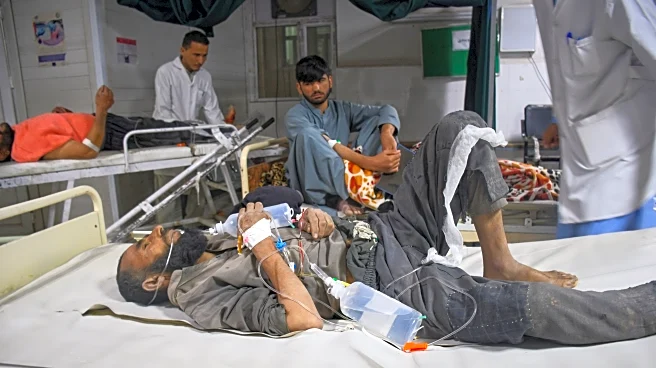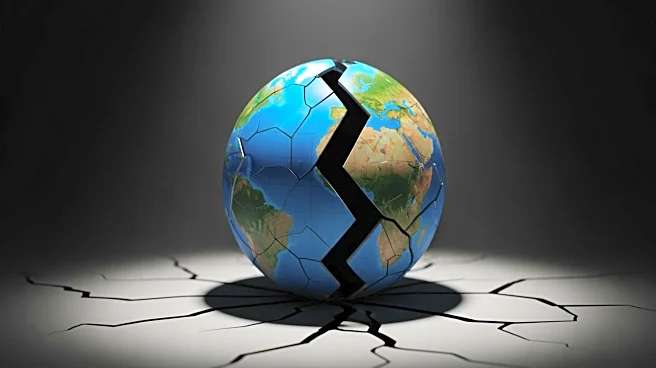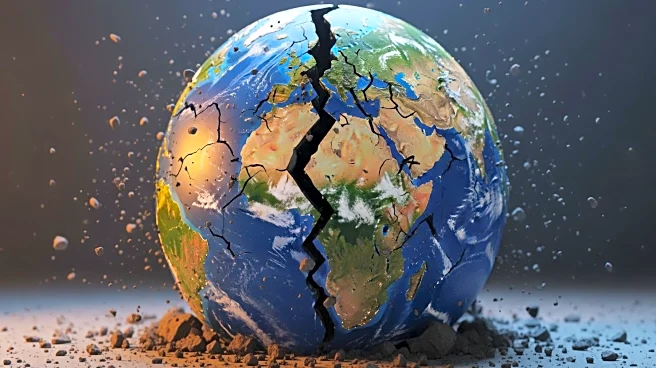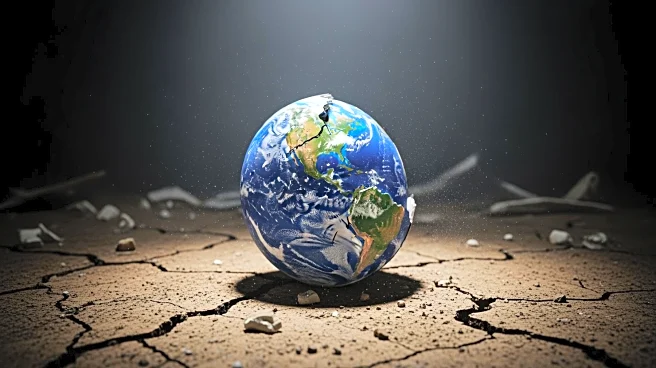What's Happening?
The United States Geological Survey (USGS) has reported that four earthquakes struck the Indonesian coastline over the past 24 hours. The earthquakes varied in magnitude, with the strongest recorded at 5.9,
occurring approximately 40 miles from Gorontalo at a depth of nearly 70 miles. Another significant quake, measuring 5.0 in magnitude, hit the Papua Province, about 110 miles west-northwest of Abepura. Two additional earthquakes, each with a magnitude of 4.7, were recorded on Wednesday. Despite the strength of these seismic events, no injuries or damage have been reported, and no tsunami warnings have been issued.
Why It's Important?
Indonesia's location on the Pacific Ring of Fire makes it particularly susceptible to seismic activity, including earthquakes and volcanic eruptions. The country's position at the convergence of several major tectonic plates, such as the Indo-Australian, Pacific, and Eurasian plates, increases its vulnerability to such natural disasters. Historical events, like the 2004 Indian Ocean earthquake and tsunami, underscore the importance of continuous monitoring and preparedness to mitigate potential casualties and infrastructure damage. The recent earthquakes highlight the ongoing tectonic activity in the region and the need for effective early warning systems and community preparedness, especially in tsunami-prone areas.
What's Next?
Seismic monitoring in Indonesia will continue as the possibility of aftershocks or additional seismic events remains. Local and international agencies are expected to assess any potential impacts on infrastructure and remain vigilant for possible tsunami warnings. Updates from the USGS and Indonesia's local seismological agencies are anticipated as more information becomes available.
Beyond the Headlines
The recent seismic activity in Indonesia is part of a broader pattern of increased global seismicity, with similar episodes reported in regions like the Caribbean, Afghanistan, and Russia's Kamchatka Peninsula. This trend emphasizes the importance of global seismic monitoring and preparedness, particularly in densely populated coastal areas that are vulnerable to tectonic hazards. The implementation of early warning systems and community drills is crucial for reducing the risk of loss of life in future events.













